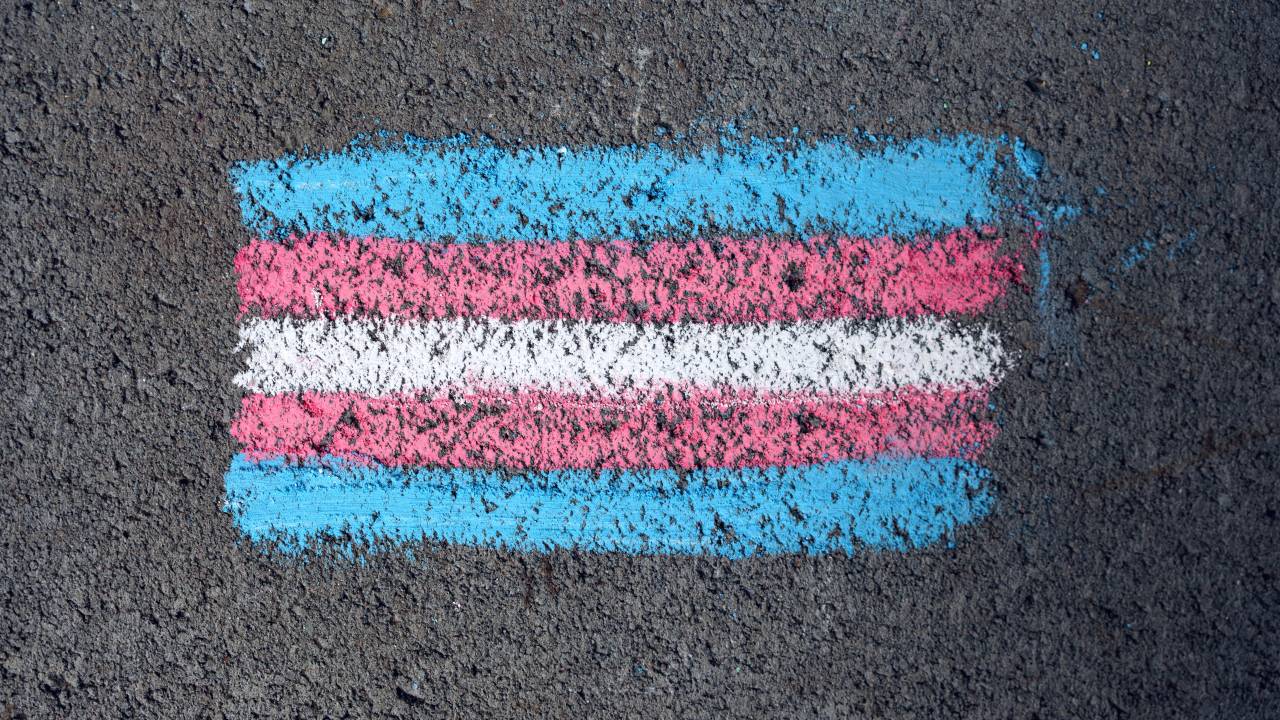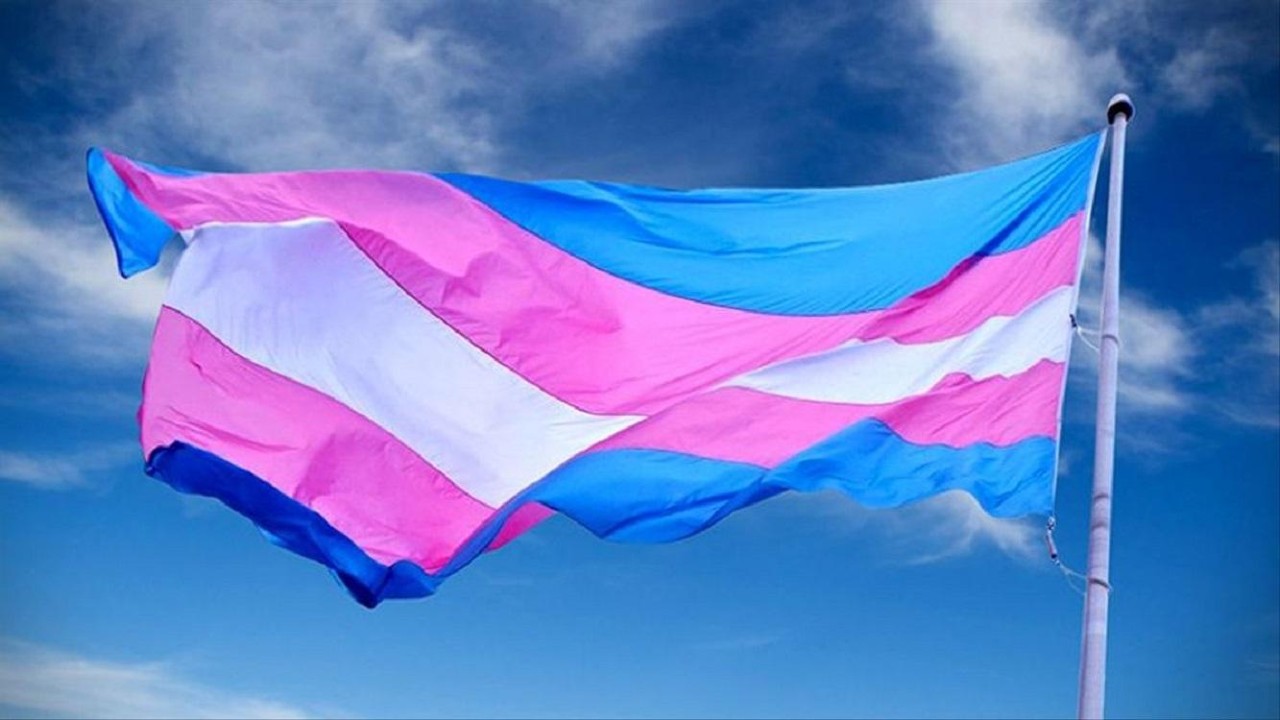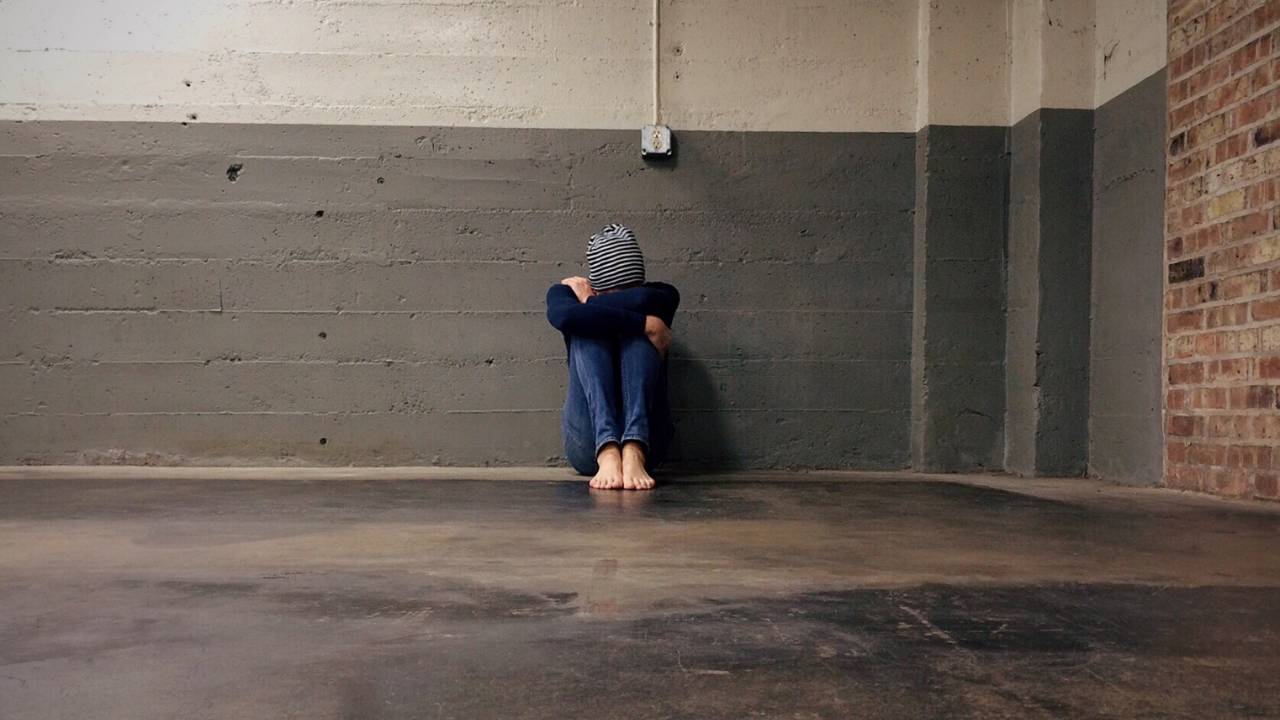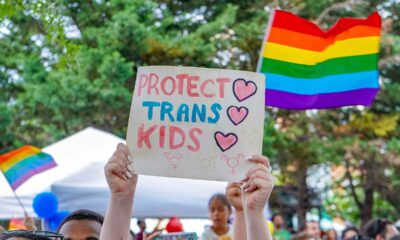Mental Health
Gender-affirming care associated with lower suicide risk
A summary of current data on suicide risk and prevention among transgender people in recognition of Suicide Prevention Month

Transgender people who need and receive gender-affirming medical care have a lower prevalence of suicide thoughts and attempts than those who need it but have not received it, according to a new fact sheet by the Williams Institute at UCLA School of Law. An estimated 5% of transgender people who accessed gender-affirming care attempted suicide in the past year compared to 9% of those who needed care but did not receive it.
Research shows that certain adverse experiences, such as discrimination or violence, are associated with higher risk of suicide thoughts and attempts among transgender people. In contrast, affirming experiences, such as family and social support, are associated with lower risks.
Research Findings
- An estimated 40% of transgender adults have attempted suicide at some point in their lifetimes, and 30% of transgender youth have attempted suicide in the past year.
- Respondents to the 2015 U.S. Transgender Survey (USTS) who reported unequal treatment in services or public places due to anti-transgender bias had more than double the prevalence of past-year suicide attempts than those who had not experienced such treatment (13% compared to 6%).
- Over 30% of USTS respondents who were physically attacked in a place of public accommodation reported attempting suicide in the past year, which is over four times the prevalence (7%) among respondents who were not similarly attacked.
- 13% of USTS respondents who had experienced religious rejection in the past year had attempted suicide in the past year compared to 6% of respondents who were accepted in their religious communities.
- More than 45,000 transgender youth live in states where laws have passed or have been proposed to prohibit youth from accessing gender-affirming care.
- A recent study in Pediatrics found that transgender adults who had received hormone therapy as adolescents were less likely to experience suicide ideation in their lifetime.
- USTS respondents who received the gender-affirming hormone therapy or surgical care they needed had lower prevalence of past-year suicide attempts than those who had not received the care they needed (5% vs. 9%).
- USTS respondents who reported their families were supportive had lower prevalence of past-year suicide attempts compared to those with unsupportive families (6% vs. 13%).
- A study in Youth & Society found that transgender youth with families that used their chosen name reported less suicide ideation than those whose families would not.
- Transgender adults with supportive classmates or co-workers reported a lower prevalence of past-year suicide thoughts or attempts than those with unsupportive peers.
“To combat suicide among transgender adults and youth, it is important that laws, policies, and programs focus on reducing discrimination against transgender people while fostering family and social support and access to gender-affirming care,” said author Jody L. Herman, Senior Scholar of Public Policy at the Williams Institute. “It is also critical that official data collection systems, like the National Violent Death Reporting System, record information about a person’s gender identity, to help inform suicide prevention strategies.”
Mental Health
Gender dysphoria is a protected disability, federal appeals court finds
Experts say the opinion gives transgender people a powerful tool to advocate for their rights in workplaces, prisons, schools and hospitals.

This story was originally published by The 19th
 The Americans with Disabilities Act (ADA) extends protections to people with gender dysphoria, a federal appeals court found this week. The opinion, issued Tuesday, marks the first time any federal appellate court has considered whether gender dysphoria — distress experienced by many, but not all, transgender people due to their body not aligning with their gender — should be a protected disability under the ADA.
The Americans with Disabilities Act (ADA) extends protections to people with gender dysphoria, a federal appeals court found this week. The opinion, issued Tuesday, marks the first time any federal appellate court has considered whether gender dysphoria — distress experienced by many, but not all, transgender people due to their body not aligning with their gender — should be a protected disability under the ADA.
The opinion enables trans people living with gender dysphoria to use federal disability laws to protect them if they live in states covered by the U.S. Court of Appeals for the Fourth Circuit — Maryland, Virginia, West Virginia, North Carolina and South Carolina. Other courts could agree with the precedent, although they’re not obligated to do so.
The details of the case brought to the court dealt with abuse that trans prisoners face behind bars in the United States, often because they are not housed according to their gender identity. But, experts say, the consequences of the opinion are far-reaching and give trans people a new powerful tool in fights over their civil rights — in workplaces, prisons, schools and hospitals.
Protection under the ADA is a powerful tool because of how the law requires reasonable accommodations for people with disabilities — it doesn’t just mandate non-discrimination. That opens up a world of possibilities for lawsuits brought against anti-trans discrimination, possibilities that go beyond what the Equal Protection Clause, Title VII or Title IX can offer, experts say.
“This really is a landmark case. It’s probably been over two decades in the making by lawyers, trans lawyers, trans clients [and] advocates,” said Kevin Barry, interim dean and law professor at Quinnipiac University School of Law.
Protections granted under the ADA for trans people with gender dysphoria may look like getting a week off from work while recovering from gender-affirming surgery, or taking the morning off for counseling related to gender transition, Barry said. Trans prisoners in particular face “horrific discrimination” when trying to access hormone therapy, surgery or correct housing, he said — and being able to make a claim under the ADA grants them a new avenue to make a case for those rights.
Tuesday’s decision by the Fourth Circuit stemmed from a lawsuit brought by Kesha Williams, a trans woman who says that prison staff harassed her, misgendered her, denied her hormone treatment and improperly housed her with men while she was incarcerated in a Virginia detention center. The Fairfax County Sheriff’s Office in Virginia, which oversees the detention center that Williams was held in, declined to comment, citing the ongoing litigation.
The federal appeals court reversed the previous dismissal of Williams’ ADA claims and sent her case back to the United States District Court for the Eastern District of Virginia. The state can petition for a full court rehearing in front of the Fourth Circuit, or Virginia could ask the Supreme Court to review whether the federal appeals court decision was correct.
“But right now, we have the law of the land in the Fourth Circuit, at least,” said Chris Erchull, staff attorney at GLBTQ Legal Advocates & Defenders (GLAD).
Trans people who want to be considered protected under the ADA must show that they are being medicated for gender dysphoria. And while not all trans people experience that dysphoria, or are able to access gender-affirming care, it is still a significant win for trans rights, and for attorneys that have been making this same argument — and winning cases based on this argument — in courts across the country for years.
Lawyers bringing disability discrimination claims for clients with gender dysphoria are not arguing that being transgender is a disability, or that being trans reflects on anyone’s ability to accomplish certain things, Erchull said.
“What we do mean to say is that people with gender dysphoria experience prejudice, are subject to stereotypes and live in a world that’s not accommodating,” he said.
The argument that ADA protections cover transgender people notched its first legal win in 2017, when a federal district court in Pennsylvania recognized gender dysphoria as a disability under the ADA. That case followed years of pressure from lawyers and advocates, said Barry, who worked on the ADA Amendments Act of 2008 to broaden protections and include transgender people. The arguments go as far back as 2002, when Jennifer Levi at GLAD made the first case arguing for a trans client to be covered under Massachusetts’ law against disability discrimination, Barry and Erchull noted.
The Williams decision is orders of magnitude more impactful than that 2017 case, because it binds all district courts in the Fourth Circuit, Barry said. The decision should also provide precedent to other circuit courts across the country.
Joshua Block, senior staff attorney with the ACLU’s LGBTQ & HIV Project, said the precedent set by this decision could aid legal fights over states attempting to enact gender-affirming health care bans or exclusions — especially due to how some states try to split hairs on who their laws are actually affecting.
“A fight that we constantly have … is we say, by excluding this health care, you’re discriminating against trans people. And they say, no we’re not discriminating based on trans status, we’re just discriminating based on this diagnosis of gender dysphoria. And if the ADA applies, then that’s not a viable response … because it’s a protected disability,” he said.
The Fourth Circuit court’s decision is also significant within the world of disability law, said Doron Dorfman, associate professor at Seton Hall Law School, who specializes in disability and health law. Strongly connecting gender dysphoria to impairment, as it’s used in disability law to guarantee protections for people living with disabilities, is a tactic he has not seen used much in cases backing transgender rights.
“This decision affirms the rights of transgender people with gender dysphoria, in our rights under federal disability laws,” said Ezra Ishmael Young, who teaches constitutional law at Cornell Law School.
In a statement, Williams’ attorney, Joshua Erlich, noted that the court’s holding applies to anyone seeking accommodations for gender dysphoria in employment or other contexts, and said: “We’re thankful that the Fourth Circuit ruled in her favor and we are excited to get back into court to vindicate Kesha’s rights.”
The 19th is an independent, nonprofit newsroom reporting at the intersection of gender, politics and policy.
Mental Health
Survey: Mental Health Concerns Increase Among All Americans
Fifth survey since April 2020 tracks mental health impact of pandemic on ages 18+ and the utilization of new technology and tools to meet demand for support

WOONSOCKET, R.I. — A recent CVS Health®/Morning Consult survey of Americans age 18+ found that mental health concerns are continuing to rise among individuals of all backgrounds, especially Black, age 65+, young adult, and LGBTQIA+ respondents. The survey also found more Americans agree that the pandemic has made them more comfortable seeking support for mental health and using technology to address it.
Key findings include:
- Six-in-ten (59%) Americans have experienced concerns about either their own mental health or that of family and friends, a 9%-point increase since April 2020.
- More than half of Americans (53%) agree that hearing about other people’s challenges makes them more comfortable seeking out resources and care for themselves.
- Since the pandemic began, most people agree that society has become more comfortable engaging in mental health discussions (56%), using digital tools to improve mental health (58%) and using telemedicine for therapy (63%).
The growing use of telemedicine and digital tools to treat mental health increases access to care, allows for greater convenience in connecting with a mental health provider, and can be a welcome option for those who are apprehensive about receiving mental health care in person.
“Despite the longstanding stigma and other challenges in mental health, there is a clear shift taking place through the power of technology,” said CVS Health President and CEO Karen S. Lynch. “CVS Health provided 10 million virtual mental health visits last year, compared to 20,000 prior to the pandemic, which is enabling us to meet the growing demand brought on by COVID-19. We are firmly committed to developing new programs and resources that help make mental health care more routine, convenient and accessible for all communities.”
Some are Suffering More than Others
The survey found the LGBTQIA+ community, young adults, Blacks, and respondents age 65+ had greater increases in mental health concerns:
- 57% of respondents who identify as LGBTQIA+ expressed concerns about their own mental health, 20%-points higher compared to other respondents.
- 74% of respondents aged 18-34 experienced mental health concerns for themselves, family or friends, reflecting a 12%-point increase compared to two years ago.
- Black Americans surveyed saw an 11%-point increase in mental health concerns since the start of the pandemic.
- Four-in-ten respondents age 65+ experienced mental health concerns for themselves, family or friends, reflecting a 10%-point increase compared to two years ago.
The survey also found that while 74% of employed adults agree that employers should offer their employees resources and access to mental health services, only 35% of employed adults feel comfortable discussing mental health with a colleague, indicating an opportunity for workplaces to further engage their employees.
“The impact of isolation, loss, grief and burnout will effect of our mental health for years to come,” said Cara McNulty, President, Behavioral Health and Mental Well-being, CVS Health. “As a result, we continue to expand services and resources to meet the long-term needs of communities, workforces – including our own – and loved ones to make gains on our goal to reduce suicide attempts 20 percent among our membership by the year 2025, which is an imperative.”
Mental Health
The Trevor Project To Launch Its Life-Saving Crisis Services for LGBTQ Youth in Mexico
For The First Time, The Leading LGBTQ Youth Suicide Prevention Organization Will Offer Its Crisis Services Beyond The U.S., With Plans to Serve LGBTQ Youth Across Several Countries In The Future

NEW YORK – The Trevor Project, the world’s largest suicide prevention and crisis intervention organization for lesbian, gay, bisexual, transgender, queer & questioning (LGBTQ) young people, announced plans to launch its digital crisis services – including TrevorChat and TrevorText – in Mexico by the end of 2022. The launch will enable Mexico-based LGBTQ young people to receive support and talk about mental health challenges they may be facing with highly trained counselors in Mexico.
“LGBTQ youth suicide is a global public health crisis and we know that so many LGBTQ young people do not have access to the services they need,” said Amit Paley, The Trevor Project’s CEO and Executive Director. “We believe that all LGBTQ young people—regardless of what country they live in—deserve the life-saving resources that The Trevor Project offers. We are proud to be able to scale our operations internationally to help more LGBTQ young people in need, while simultaneously moving full steam ahead to continue supporting more LGBTQ youth in the U.S.”
While The Trevor Project estimates that more than 1.8 million LGBTQ young people seriously consider suicide each year in the U.S., that number is more than 40 million LGBTQ youth globally. Specifically in Mexico, it’s estimated that more than 745,000 LGBTQ youth ages 13-24 are in crisis, though that figure is a rough approximation due to a severe lack of data collection and research. To identify the first country for its international expansion, The Trevor Project undertook a robust research phase and assessed laws impacting local LGBTQ communities, need for LGBTQ youth mental health support, operational feasibility, regulatory risk, human resources, and more.
“There is a persistent need for more mental health resources and support for LGBTQ youth in Mexico,” said Carlos Carrazana, The Trevor Project’s Chief Operating Officer, who is based in Mexico. “We also know that the challenges LGBTQ young people face in Mexico may look different than those that youth face in the U.S. We’re aware that there are many amazing local organizations fighting for the wellbeing of LGBTQ youth in Mexico, and we’re so energized to collaborate with those on the ground and build on the progress they’ve already made.”
The Trevor Project is actively hiring for various Mexico-based roles, including but not limited to Executive Director, Director of Digital Crisis Services, Director of Recruitment, Director of People Operations, and Director of Growth. In addition, the organization is building an international expansion team to help lead systematic research, tools adaptation and translation, training implementation, recruitment, and obtaining legal presence, all of which are happening in parallel.
The organization has achieved remarkable growth in the past five years, steadily recruiting new talent to grow its staff from 60 people to nearly 350 people and deepening its expertise, competencies, and capacity across each of its key program areas: Crisis Services, Research, Advocacy, Public Education, and Peer Support. With a crisis support model that has proven successful in the U.S. and significant domestic growth under its belt, The Trevor Project aims to expand its life-saving services to LGBTQ young people in need around the globe.
The Trevor Project’s goal to expand internationally was originally introduced in its three-year strategic plan, which was developed to respond to the global public health crisis of LGBTQ youth suicide. Launching 24/7 digital crisis services for LGBTQ young people in Mexico will enable the organization to build expertise in both language and geographic expansion, while providing a foundation to support LGBTQ young people in additional countries in the future.














